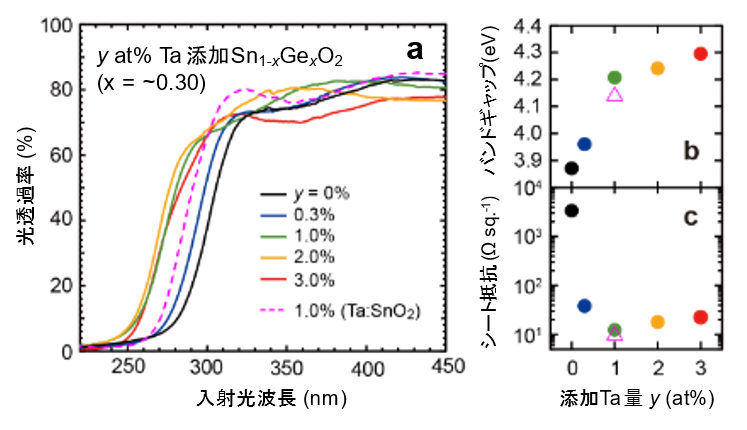DATE2022.12.13 #Press Releases
Development of new electrode material that transmits deep-ultraviolet light
Disclaimer: machine translated by DeepL which may contain errors.
~Expectations for Highly Efficient Deep-Ultraviolet Optoelectronic Devices
Tokyo Metropolitan University
Graduate School of Science, The University of Tokyo
University of Tsukuba
Summary of Presentation
Deep ultraviolet light with a wavelength of 200-300 nm, which is invisible to the human eye, is used for various applications including sterilization, environmental purification, and semiconductor microfabrication. Currently, mercury vapor lamps are used as practical deep-ultraviolet light sources, but the compact and low-cost light-emitting diodes (LEDs) are expected to become the next-generation light source. On the other hand, LEDs and other deep-ultraviolet optoelectronic devices have the problem that the transparent electrodes used to move light in and out of the devices absorb deep-ultraviolet light.
A research group led by Professor Yasushi Hirose of the Graduate School of Science, The University of Tokyo, Professor Tetsuya Hasegawa of the Graduate School of Science, The University of Tokyo, graduate student Yo Nagashima, and Lecturer Daiichiro Sekiba of the Graduate School of Pure and Applied Sciences, University of Tsukuba, and their colleagues have developed a new method to produce a rutile-type crystal structure of tin dioxide ( SnO2 ) in solid solution with germanium dioxide ( GeO2 ) by adding a trace amount of (SnO2) and germanium dioxide (GeO2), which has a rutile-type crystal structure, exhibits excellent transparent conductivity in deep ultraviolet light. Furthermore, we succeeded in forming a low-resistance thin film on aluminum nitride, a practical deep-UV LED material. These results are expected to lead to higher efficiency and industrial applications of deep-ultraviolet optoelectronic devices.
The research results were published in the online edition of Chemistry of Materials on Monday, December 13, 2022, at 11:00 a.m. (Japan Standard Time).

Figure: (a) optical transmittance spectrum, (b) band gap, and (c) sheet resistance of Ta-doped Sn1-xGexO2thin film ( GeO2 fraction is about 30%).
For more information, please visit the Tokyo Metropolitan University website.


